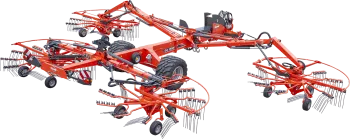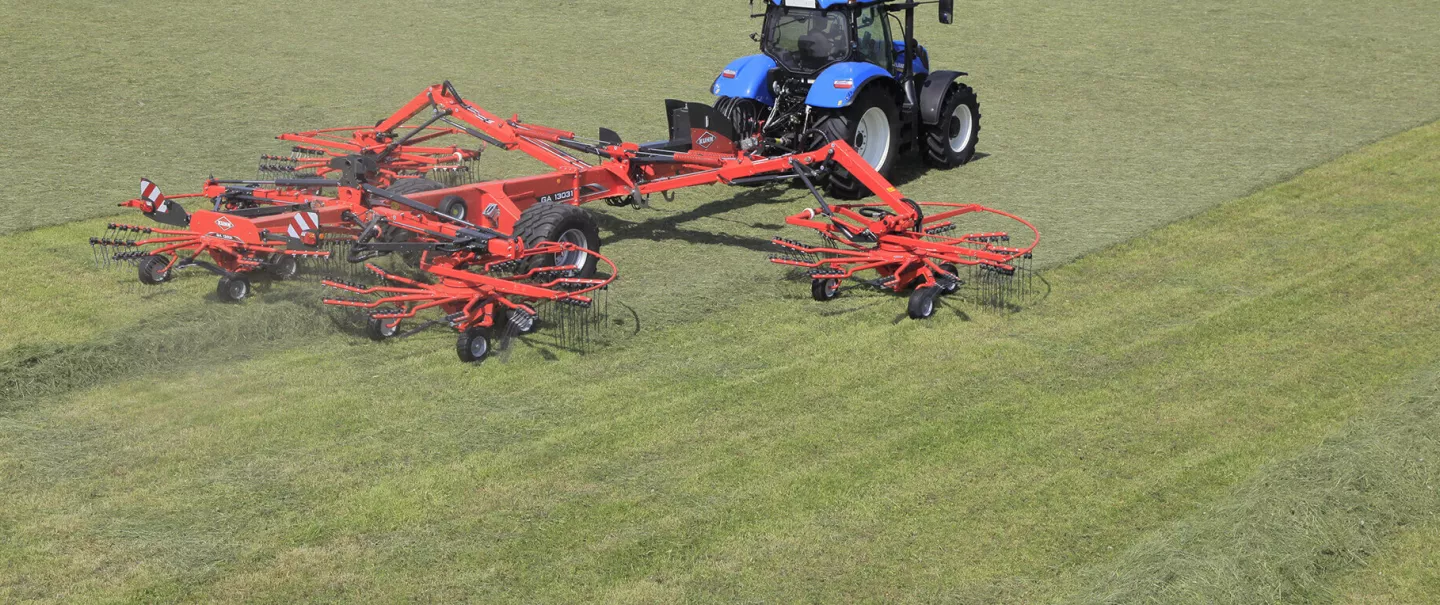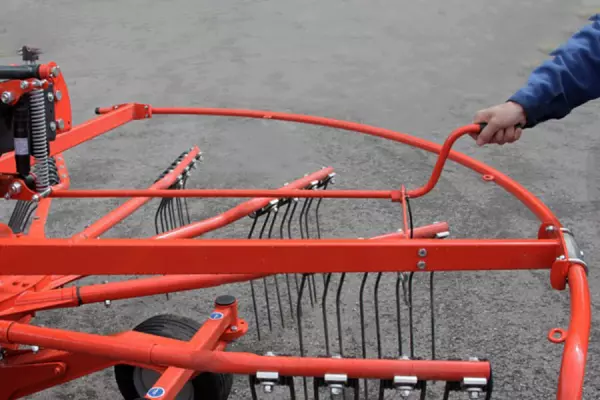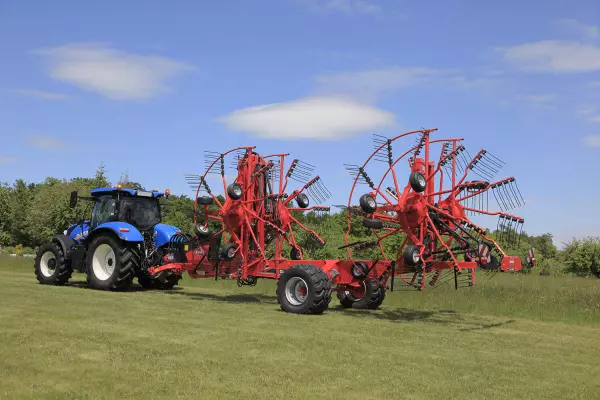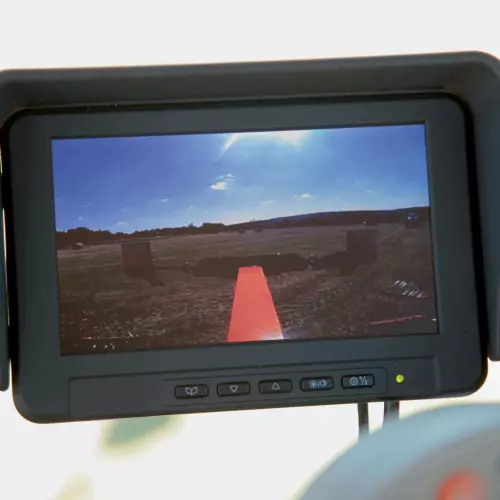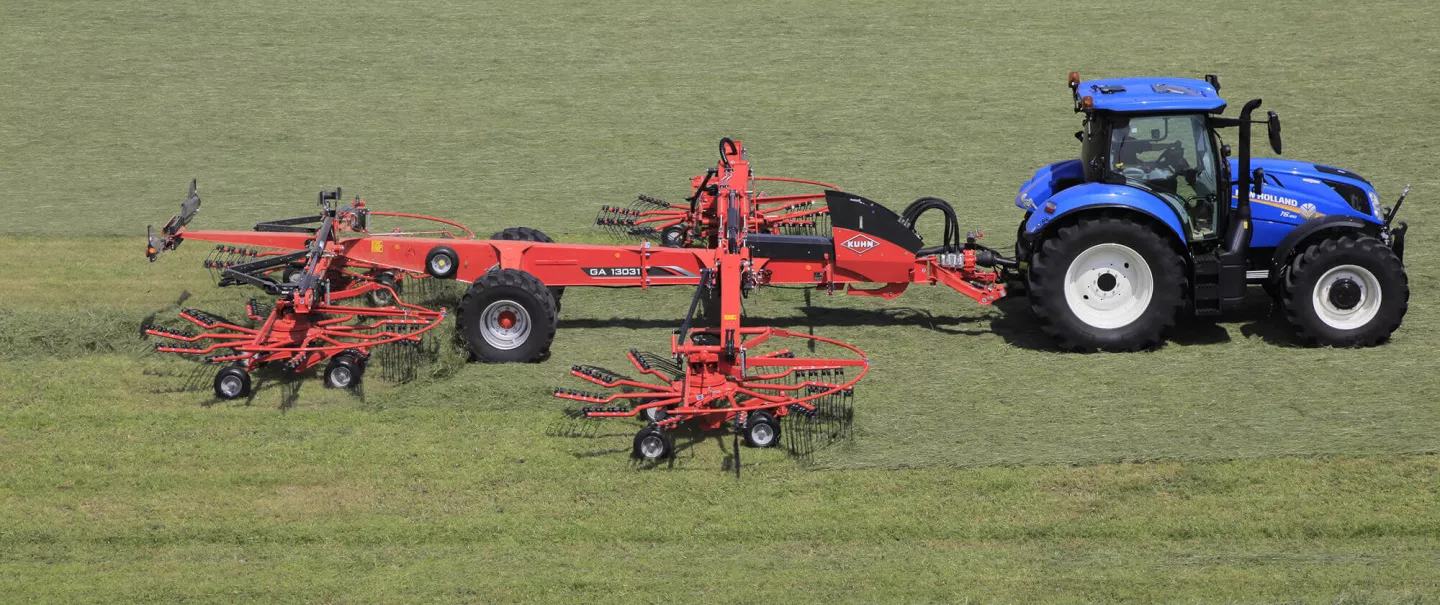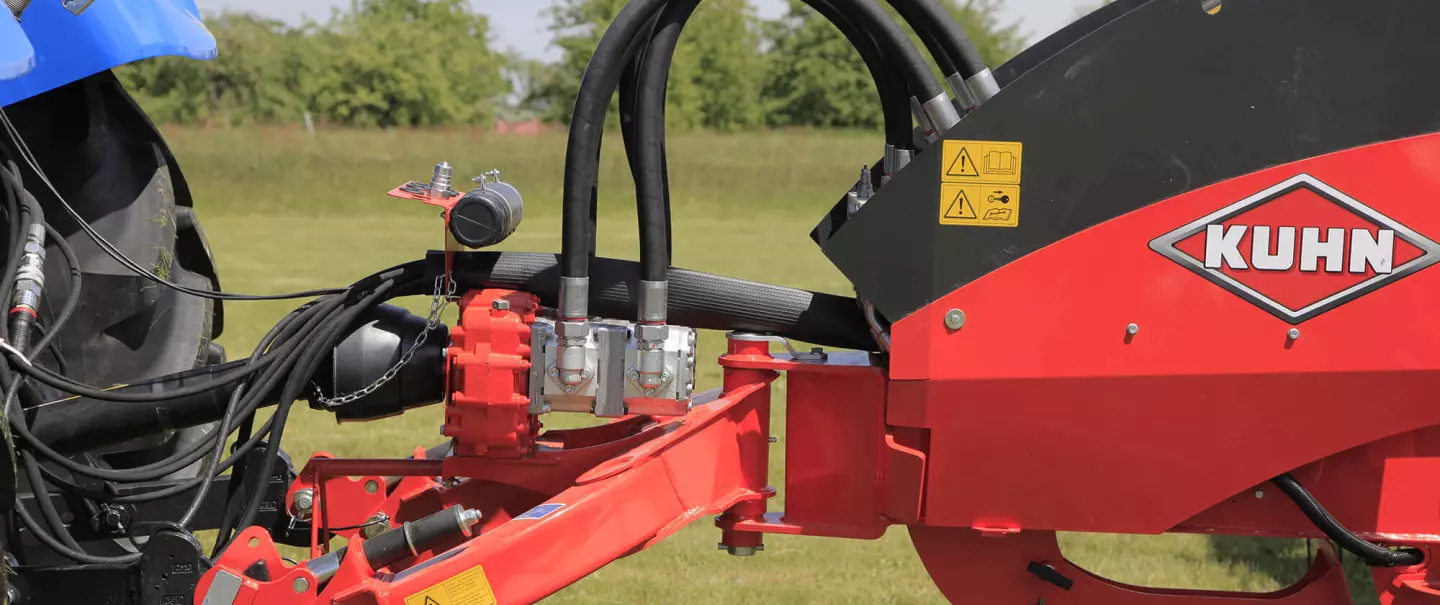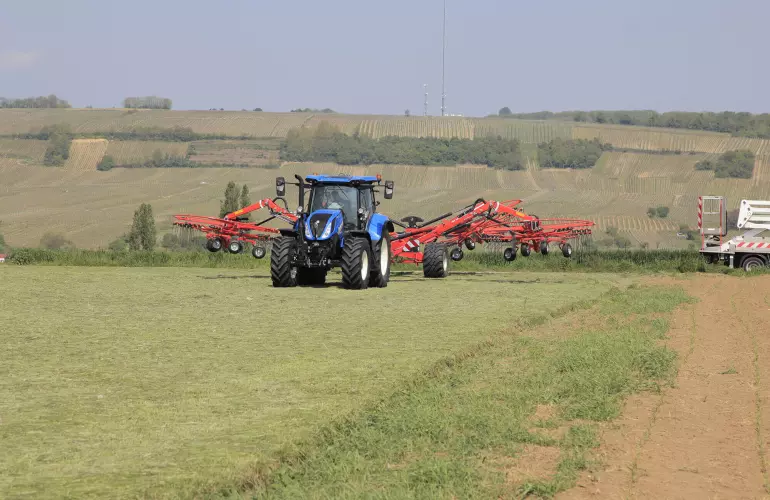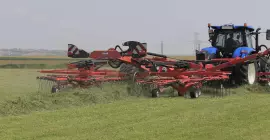Optimum swath formation with double-curved tine arms
The homogeneous quality and the volume of swaths are necessairy for faster drying and easy pick-up by balers.
The tine arms on GA rakes are in a hyper-tangential position. This means that they reach a 90° angle very late. With the tines' sharp-angled cam, tine clearance is quick, later and requires little rotational effort to produce regular, fluffy and straight swaths. Raking is of high quality even at fast speeds because the forage is not pushed past the swath.
The advantages of double-curved arms:
- They reduce the distance between tine passes. Forage loss is reduced, even at higher speeds
- The main weight is at the centre of the tine arm. This increases service life as it is not subject to pressure during rotation and the guide rollers are less subjected to stress.


